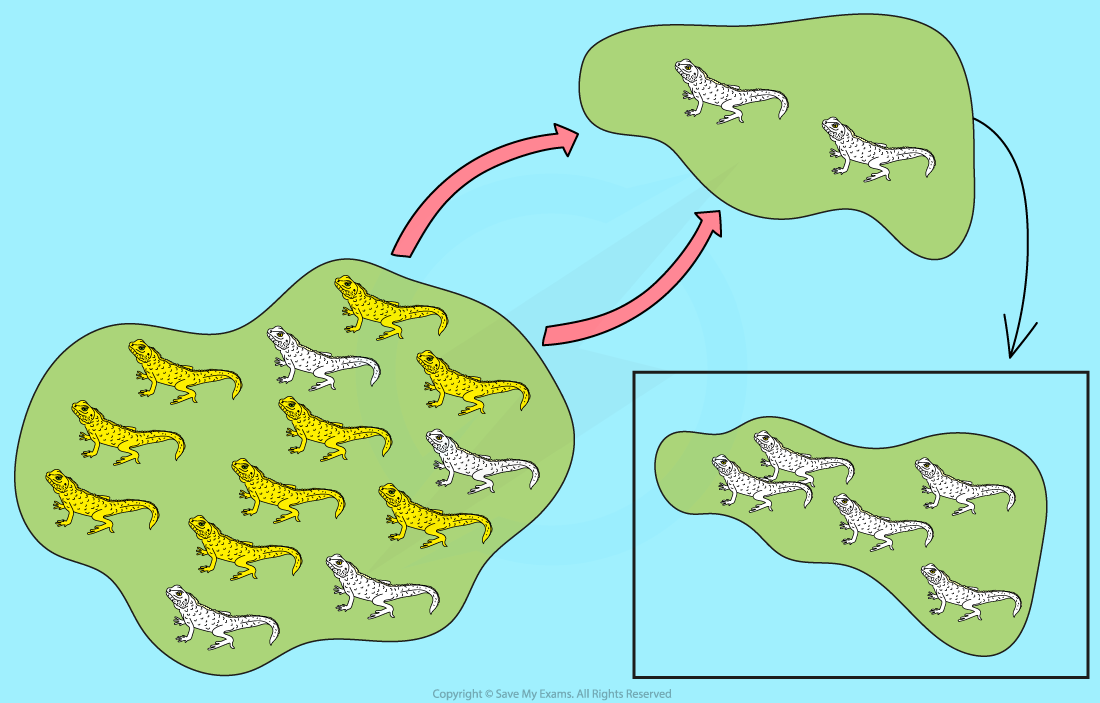Gradualism & Speciation
- Speciation can be defined as the emergence of new and distinct species that are reproductively isolated from other separate species
- Two theories exist to explain the emergence of new species
- Gradualism
- Punctuated Equilibrium
Gradualism
- Speciation due to divergence of isolated populations can be gradual
- Large changes between species occur due to the culmination of many small changes that accumulate over time
- Because of the long period of time in which life has existed on Earth (approx 3.5 billion years), one might expect that organisms speciated gradually from their ancestors
- Evidence exists in the fossil record to show that patterns of evolution can follow the geological cycle, which consists of long, slow changes that take place over thousands and millions of years
- Charles Darwin originally subscribed to the point of view of gradualism, having observed vestigial structures in the fossil record
- Vestigial structures are observable characteristics that have no apparent function
- They are residual parts from a past ancestor that are still inherited but have fallen into disuse
- Examples of vestigial structures include the human appendix and the wings of flightless birds
![]()
The iconic image of evolution implies gradualism as humans and chimpanzees both evolved from a common ancestor via intermediate species
Punctuated Equilibrium
- Speciation can occur abruptly
- Punctuated equilibrium implies long periods without appreciable change and short periods of rapid evolution
- In the late 19th century, palaeontologists (scientists specialising in the study of life forms that existed in past geological periods) began to notice anomalies in the fossil record that cast doubt on Darwin and others' theories of gradualism
- One such scientist was William Bateson (who along with Reginald Punnett first observed non-Mendelian inheritance patterns)
- Breaks occurred in the fossil record that revealed no intermediate species
- Fossil appeared relatively unchanged for long periods of time yet changed abruptly at other times
- Sudden mass extinctions were observed
- Cataclysmic events such as huge volcanic eruptions, meteor strikes and large-scale gaseous changes to the atmosphere can cause mass extinctions
- Some members of the populations that are not adversely affected may survive the event
- These can restart reproduction with a reduced gene pool
- This is called the Founder Effect

The Founder Effect as shown by lizards. If the original island was destroyed and only the white (recessive phenotype) lizards move to the new island and so the whole population ends up having the white phenotype.
Exam Tip
An analogy for punctuated equilibrium is a pool-drop river that features long stretches of calm, slow-flowing water punctuated by rapids and waterfalls. Gradualism would be represented by a river that flows smoothly down a shallow, uninterrupted gradient out to the ocean.
